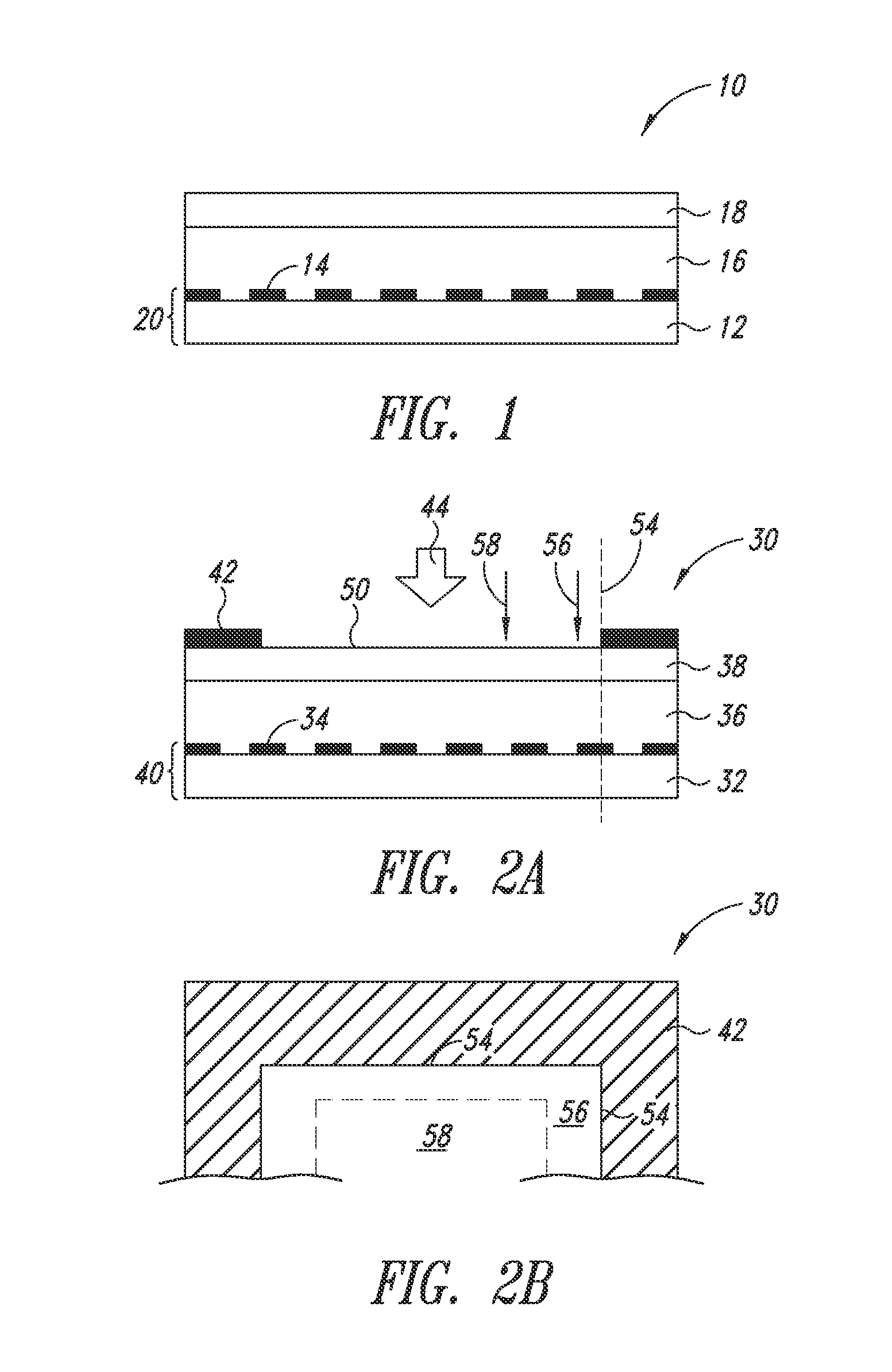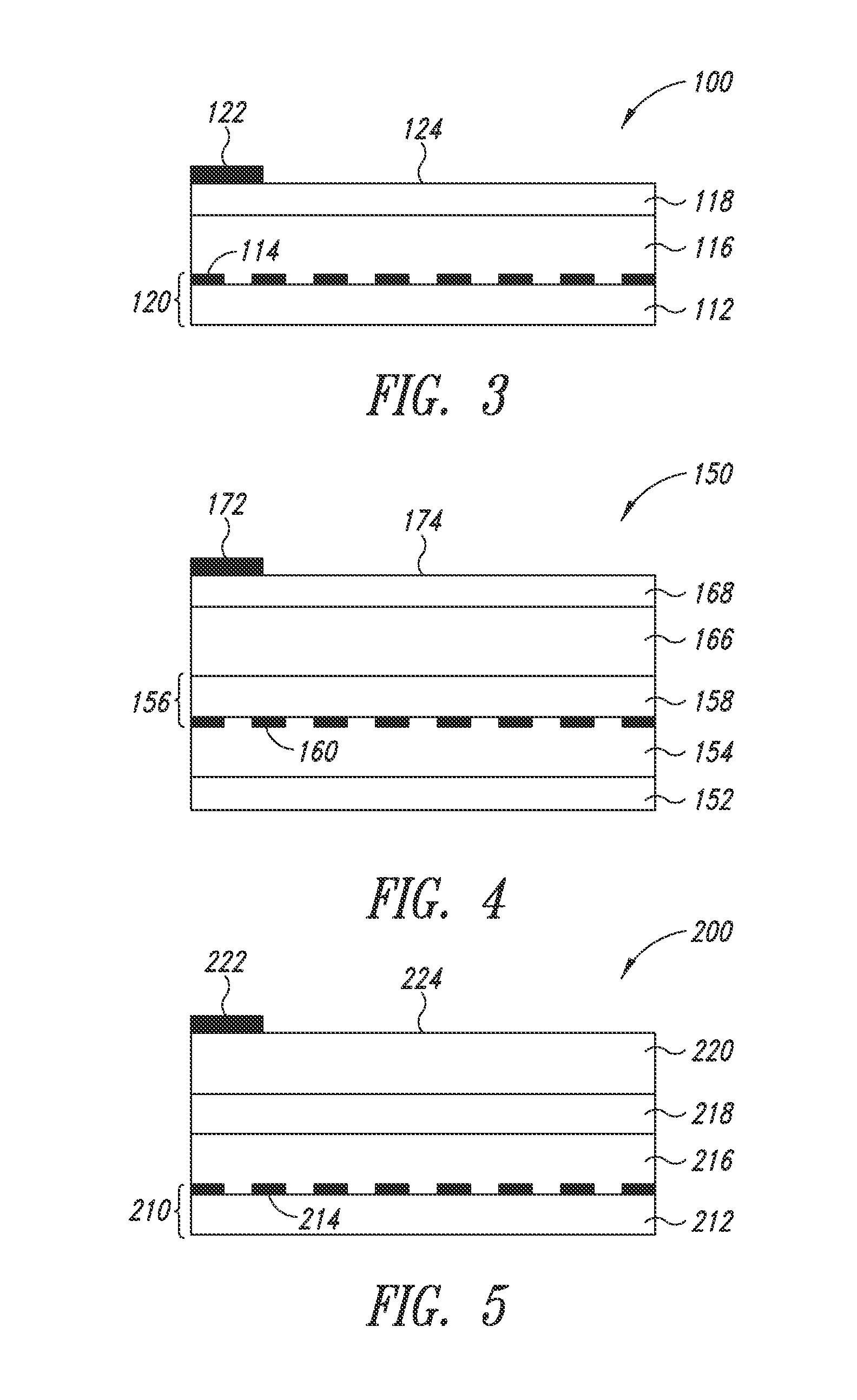Silver nanostructure-based optical stacks and touch sensors with UV protection
a nanostructure, optical stack technology, applied in the direction of instruments, lighting and heating apparatus, pulse technique, etc., can solve the problems of affecting the application of metal oxide films on flexible substrates, affecting the performance of optical stacks, and prone to damage, etc., to achieve the effect of prolonging the light exposur
- Summary
- Abstract
- Description
- Claims
- Application Information
AI Technical Summary
Benefits of technology
Problems solved by technology
Method used
Image
Examples
example 1
Synthesis of Silver Nanowires
[0099]Silver nanowires were synthesized by the reduction of silver nitrate dissolved in ethylene glycol in the presence of poly(vinyl pyrrolidone) (PVP) following the “polyol” method described in, e.g., Y. Sun, B. Gates, B. Mayers, & Y. Xia, “Crystalline silver nanowires by soft solution processing”, Nanoletters, (2002), 2(2) 165-168. A modified polyol method, described in U.S. Published Application Nos. 2008 / 0210052 and 2011 / 0174190, in the name of Cambrios Technologies Corporation, produces more uniform silver nanowires at higher yields than does the conventional “polyol” method. These applications are incorporated by reference herein in its entirety.
example 2
Standard Film-Fabrication Procedures
[0100]An ink composition was prepared that comprised silver nanowires, a cellulose based binder, and a surfactant (e.g., a fluorosurfactant such as ZONYL® FSA). The ink was slot-die, roll-to-roll coated on a PET film (e.g., MELINEX-454 or TORAY U483) and was allowed to dry to form a nanowire layer. For certain embodiments, a polymeric overcoat was then applied on the nanowire layer.
[0101]The roll-to-roll process can accommodate a variety of substrate and film dimensions. Suitable roll-to-roll deposition processes can include, but are not limited to, slot die, gravure, reverse gravure, micro-gravure, reverse roll and Mayer-bar. More detailed description of the roll-to-roll process can be found in U.S. Pat. No. 8,049,333 and U.S. Published Patent Application No. 2013 / 0040106, in the name of Cambrios Technologies Corporation, the assignee of the present application. Both of these patent documents are incorporated herein by reference in their entireti...
example 3
Light Stability of Films with and without UV-Blocking Layer
[0102]A sample optical stack (1000) without a UV-blocking layer is shown in FIG. 14A. A basic transparent conductive film (1010) having a PET substrate (1020) and a networking layer of silver nanowires (1030) was first made according to Example 2. The basic transparent conductive film was then mounted on a piece of Eagle XG glass (1040) and secured with tapes (1050) around the edges. The nanowires (1030) face the glass (1040) and are loosely in contact with it, but not bonded to it with any adhesive. An air gap (1044) is schematically shown to illustrate this configuration.
[0103]Another sample optical stack (1060) with a UV-blocking layer is shown in FIG. 14B and can be made from the optical stack (1000) of FIG. 14A by laminating a UV-blocking film (1070) on the surface of the glass opposite from the nanowires.
[0104]FIG. 14C shows the transmission spectrum of bare Eagle XG glass, as compared to that of the glass laminated wi...
PUM
 Login to View More
Login to View More Abstract
Description
Claims
Application Information
 Login to View More
Login to View More - R&D
- Intellectual Property
- Life Sciences
- Materials
- Tech Scout
- Unparalleled Data Quality
- Higher Quality Content
- 60% Fewer Hallucinations
Browse by: Latest US Patents, China's latest patents, Technical Efficacy Thesaurus, Application Domain, Technology Topic, Popular Technical Reports.
© 2025 PatSnap. All rights reserved.Legal|Privacy policy|Modern Slavery Act Transparency Statement|Sitemap|About US| Contact US: help@patsnap.com



